As AI technologies become increasingly integrated across various industries, the imperative for regulatory compliance has never been greater. Organizations are rapidly adopting AI to enhance efficiency, drive innovation, and gain competitive advantages. However, with this surge in AI implementation comes a heightened responsibility to navigate the complex web of legal and ethical standards governing these technologies. Regulatory compliance in AI is not merely a checkbox exercise; it is a comprehensive approach that ensures AI systems are developed and deployed in a manner that is both legally sound and ethically responsible.
Regulatory compliance in AI encompasses adherence to a multitude of laws, regulations, and industry standards designed to protect user data, ensure transparency, and promote fairness. These regulations aim to mitigate risks associated with AI, such as privacy violations, algorithmic biases, and lack of accountability. By prioritizing regulatory compliance, organizations can safeguard against potential legal repercussions, reputational damage, and loss of consumer trust. Moreover, regulatory compliance fosters a culture of ethical AI development, aligning technological advancements with societal values and expectations.
Understanding Regulatory Compliance in AI
Definition of Regulatory Compliance
Regulatory compliance in AI refers to the adherence to a structured set of legal requirements, industry standards, and ethical guidelines that govern the lifecycle of AI technologies—from development through deployment and beyond. This compliance framework ensures that AI systems operate within the boundaries of the law, respect user rights, and uphold ethical standards. Key components of regulatory compliance include data protection, algorithmic transparency, bias mitigation, and accountability.
Ensuring regulatory compliance is crucial for several reasons. Firstly, it protects user data from misuse and unauthorized data access to, thereby maintaining user trust. Secondly, it promotes transparency in AI decision-making processes, enabling stakeholders to understand and verify AI outputs. Thirdly, it addresses ethical concerns by ensuring that AI systems do not perpetuate biases or discriminatory practices. Lastly, regulatory compliance provides a safeguard against legal liabilities, as non-compliance can result in hefty fines, legal battles, and regulatory sanctions.
Regulatory Landscape
The regulatory landscape for AI is diverse and multifaceted, encompassing a range of frameworks and guidelines designed to govern various key aspects of AI technologies.
Data Protection Laws
Data protection laws such as the General Data Protection Regulation (GDPR) and the California Consumer Privacy Act (CCPA) are pivotal in the AI regulatory framework. GDPR, which applies to all organizations processing the personal data of EU citizens, mandates stringent data protection measures, including obtaining explicit consent for data processing, ensuring data accuracy, and implementing robust security protocols. The CCPA, applicable to businesses operating in California, grants consumers rights over their personal data, such as the right to access, delete, and opt-out of data sales. Compliance with these laws is essential for AI projects that often handle personal and sensitive data, ensuring that data privacy and user rights are preserved.
Industry-Specific Regulations
Certain industries are subject to specific regulations that govern the use of AI technologies. For instance, in the healthcare sector, regulations such as the Health Insurance Portability and Accountability Act (HIPAA) in the US set standards for data governance enables the protection of health information. AI systems in healthcare must comply with HIPAA to ensure that patient data is kept confidential and secure. Similarly, in the financial sector, regulations like the Dodd-Frank Act and the Basel III framework impose stringent requirements on financial institutions to manage risks and maintain transparency in AI-driven decision-making processes. Adhering to industry-specific regulations ensures that AI technologies align with the unique compliance needs of each sector.
Ethical Guidelines
Beyond legal and industry-specific regulations, ethical guidelines play a crucial role in shaping responsible AI development. Organizations are increasingly guided by ethical frameworks such as the IEEE’s Ethically Aligned Design and the European Commission’s Ethics Guidelines for Trustworthy AI. These guidelines emphasize principles such as fairness, accountability, transparency, and human-centric AI. They advocate for the design of AI systems that respect human rights, avoid biases, and promote social well-being. By adhering to these ethical guidelines, organizations can ensure that their AI initiatives not only comply with regulatory requirements but also align with broader societal values.

Key Components of Regulatory Compliance in AI
Data Governance Frameworks
Data governance frameworks are essential for ensuring regulatory compliance in AI projects. These data management frameworks provide a structured approach to managing data throughout its data lifecycle, from collection and storage to processing and disposal. The key elements of effective data governance frameworks include data quality management, data security, and data privacy.
- Data Quality Management: Ensuring high data quality is crucial for the reliability and accuracy of AI systems. Data governance frameworks establish standards for data accuracy, completeness, consistency, and timeliness. By maintaining high-quality data, organizations can ensure that their AI models are built on a solid foundation, leading to more reliable and trustworthy outcomes.
- Data Security: Protecting data from unauthorized access, breaches, and other security threats is a fundamental aspect of data governance. Data governance frameworks mandate the implementation of robust security measures, such as encryption, access controls, and regular security audits. These measures help safeguard sensitive information and comply with data protection regulations like GDPR and CCPA.
- Data Privacy: Data privacy is a critical concern in AI projects, particularly when dealing with personal or sensitive information. Data governance frameworks ensure compliance with data privacy laws by enforcing policies and procedures for data anonymization, consent management, and data minimization. By prioritizing data privacy, organizations can protect user rights and build trust with stakeholders.
In summary, the data governance and AI- frameworks are integral to AI regulatory compliance, providing the tools and guidelines to manage data responsibly, maintain data quality, and ensure data security and privacy.
Algorithmic Transparency
Algorithmic transparency is a cornerstone of regulatory compliance in AI. It involves making the decision-making processes of AI systems understandable and accessible to stakeholders, including regulators, users, and impacted individuals. Achieving algorithmic transparency requires several key practices:
- Detailed Documentation: Comprehensive documentation of AI algorithms is essential for transparency. This includes documenting the data used for training, the design and development process, the logic behind decision-making, and any assumptions or biases inherent in the algorithm. Detailed documentation allows stakeholders to scrutinize and understand how the AI system operates.
- Explainability: Providing clear explanations for AI decisions is crucial for building trust and meeting regulatory requirements. Explainability involves developing methods to interpret and articulate how AI models arrive at specific outcomes. Techniques such as feature importance analysis, local interpretable model-agnostic explanations (LIME), and SHapley Additive exPlanations (SHAP) can help make AI decisions more understandable.
- Auditability: Regular audits of AI systems ensure ongoing compliance with transparency standards. Audits involve examining the AI model’s performance, checking for adherence to documented processes, and verifying that explanations for decisions are accurate and consistent. Audits help identify any deviations from established practices and provide opportunities for corrective action.
Algorithmic transparency not only meets regulatory requirements but also fosters trust and accountability in AI systems. By using data governance capabilities, making AI decision-making processes clear and data sources more accessible, organizations can demonstrate their commitment to responsible AI development.

Bias Detection and Mitigation
Addressing algorithmic bias is a critical component of regulatory compliance in AI. Bias in AI systems can lead to unfair or discriminatory outcomes, which can have serious legal and ethical implications. Effective bias detection and mitigation strategies include:
- Diverse Datasets: Using diverse and representative datasets for training AI models is fundamental to minimizing bias. Organizations should ensure that their datasets reflect the diversity of the population they serve, avoiding over-representation or under-representation of specific groups. This helps reduce the likelihood of biased outcomes.
- Fairness Metrics: Implementing fairness metrics allows organizations to quantify and monitor bias in AI models. Metrics such as demographic parity, equalized odds, and disparate impact ratio help assess the fairness of AI outcomes across different demographic groups. Regularly evaluating these metrics ensures that AI systems are equitable.
- Bias Audits: Conducting regular bias audits involves systematically examining AI models for potential biases. Bias audits can include techniques such as bias testing, sensitivity analysis, and impact assessment. By identifying and addressing biases early, organizations can prevent discriminatory outcomes and ensure compliance with fairness standards.
- Bias Mitigation Techniques: Various techniques can be employed to mitigate bias in AI systems. These include re-sampling or re-weighting training data to balance representation, implementing algorithmic fairness constraints during model training, and post-processing adjustments to correct biased outcomes. Combining multiple techniques can enhance the overall fairness of AI models.
Effective bias detection and mitigation are essential for regulatory compliance and ethical AI development. By proactively addressing biases, organizations can create AI systems data products that are fair, just, and aligned with societal values.
Best Practices for Achieving Regulatory Compliance in AI Projects
Cross-functional Collaboration
Achieving regulatory compliance requires collaboration between data scientists, legal experts, compliance officers, and other stakeholders. This cross-functional approach ensures that regulatory requirements are considered throughout the AI project lifecycle, from development to deployment.
Documentation and Auditing
Maintaining detailed documentation of AI development and data integration processes and conducting regular audits are critical for regulatory compliance. Documentation of data assets provides a clear record of compliance efforts, while audits help identify and address any compliance gaps.
Ethical Considerations
Integrating ethical principles into AI projects is essential for regulatory compliance. Ethical considerations include ensuring fairness, accountability, and transparency in AI systems, which help build trust and prevent harm.

Overcoming Challenges in Regulatory Compliance
Data Privacy Concerns
Data privacy concerns, such as data security breaches and unauthorized access, pose significant challenges in AI projects. Organizations can mitigate these risks by implementing robust data security measures, conducting regular risk assessments, maintaining data quality, and ensuring compliance with data protection laws.
Interpretability and Explainability
The interpretability and explainability of AI algorithms enterprise data are crucial for regulatory compliance. Organizations must address challenges related to the black-box nature of some AI models by developing methods to explain AI decisions clearly and ensuring that AI outputs can be understood by non-technical stakeholders.
Evolving Regulatory Landscape
The rapidly evolving regulatory landscape surrounding AI and machine learning presents challenges for organizations. Staying abreast of regulatory changes requires continuous monitoring of new regulations, engaging with regulatory bodies, and adapting compliance strategies accordingly.
Future Trends in Regulatory Compliance and AI
Regulatory Innovation
As AI technologies continue to evolve rapidly, the regulatory landscape must adapt to address new challenges and opportunities. Regulatory innovation is crucial for ensuring that AI systems are developed and deployed responsibly. Several emerging trends are shaping the future of regulatory compliance in AI:
AI-Specific Regulations
Traditional regulations often fall short of addressing the unique challenges posed by AI. As a result, governments and regulatory bodies are developing AI-specific regulations that provide clear guidelines tailored to the nuances of AI technologies. For example, the European Union’s proposed Artificial Intelligence Act seeks to classify AI systems based on their risk levels and impose stricter requirements on high-risk applications. These regulations ensure that AI systems are safe, transparent, and accountable.
Regulatory Sandboxes
Regulatory sandboxes offer a controlled environment where companies can test innovative AI solutions under the supervision of regulators. These sandboxes allow organizations to experiment with new technologies while ensuring compliance with regulatory standards. They provide a space for regulators and developers to collaborate, identify potential risks, and refine regulatory frameworks based on real-world insights. For instance, the UK’s Financial Conduct Authority (FCA) has established a regulatory sandbox for fintech innovations, which includes AI-driven financial services.
Dynamic and Adaptive Regulations
Given the rapid pace of AI advancements, static regulations may become obsolete quickly. Therefore, there is a growing trend towards dynamic and adaptive regulations that can evolve in response to technological changes. These regulations involve continuous monitoring and updating to address emerging risks and opportunities in the AI landscape. Adaptive regulatory approaches enable a more flexible and responsive regulatory environment, ensuring that AI technologies remain safe and ethical as they evolve.
International Collaboration
The global nature of AI development necessitates international collaboration in regulatory innovation. Countries and regulatory bodies are increasingly working together to harmonize AI regulations and establish common standards. Initiatives such as the Global Partnership on AI (GPAI) and the OECD’s AI Principles are examples of efforts to foster international cooperation and create a cohesive regulatory framework for AI. Collaborative approaches help prevent regulatory fragmentation and promote a unified approach to AI governance.

Self-regulation and Industry Standards
In addition to formal regulations, self-regulation, and industry standards play a crucial role in promoting responsible AI development. These mechanisms enable organizations to proactively address regulatory requirements and demonstrate their commitment to ethical AI practices.
Development of Industry Standards
Industry standards provide a set of best practices and guidelines that organizations can follow to ensure compliance with regulatory and ethical requirements. Standards developed by bodies such as the International Organization for Standardization (ISO) and the Institute of Electrical and Electronics Engineers (IEEE) offer comprehensive frameworks for AI governance. For example, ISO/IEC JTC 1/SC 42 focuses on AI standardization, covering areas such as data quality, algorithmic transparency, and risk management. Adhering to these standards helps organizations align with regulatory expectations and foster trust among stakeholders.
Codes of Conduct
Self-regulatory codes of conduct are voluntary agreements within industries that outline ethical principles and responsible practices for AI development and deployment. These codes serve as a commitment by industry players to uphold high standards of conduct, even in the absence of formal regulations. For instance, the Partnership on AI, an industry consortium, has developed a set of best practices for the ethical development and use of AI technologies. By adhering to such codes, organizations can demonstrate their dedication to ethical AI and build credibility with regulators and the public.
Third-Party Audits and Certifications
Independent third-party audits and certifications provide an additional layer of assurance for regulatory compliance and ethical AI practices. Organizations can undergo assessments by accredited bodies to verify that their AI systems meet established standards and regulatory requirements. Certifications such as the EU’s CE marking for AI products indicate compliance with safety, health, and environmental protection standards. Third-party audits and certifications enhance transparency and accountability, reassuring stakeholders that AI systems are developed responsibly.
Corporate Governance and Ethics Committees
Establishing internal governance structures, such as ethics committees, can help organizations oversee AI development and ensure adherence to ethical and regulatory standards. These committees, comprising diverse stakeholders, including legal experts, ethicists, and technologists, can review AI projects, assess potential risks, and guide ethical considerations. By integrating ethical oversight into corporate governance, organizations can proactively address regulatory compliance and promote a culture of responsible AI development.
Conclusion
Regulatory compliance is a fundamental aspect of AI projects, ensuring that AI technologies are developed and deployed responsibly. Organizations must adopt a proactive approach to regulatory compliance, leveraging modern data governance frameworks and ethical principles to mitigate risks and promote trust. By prioritizing data stewardship and regulatory compliance, organizations can drive ethical and responsible AI innovation.



